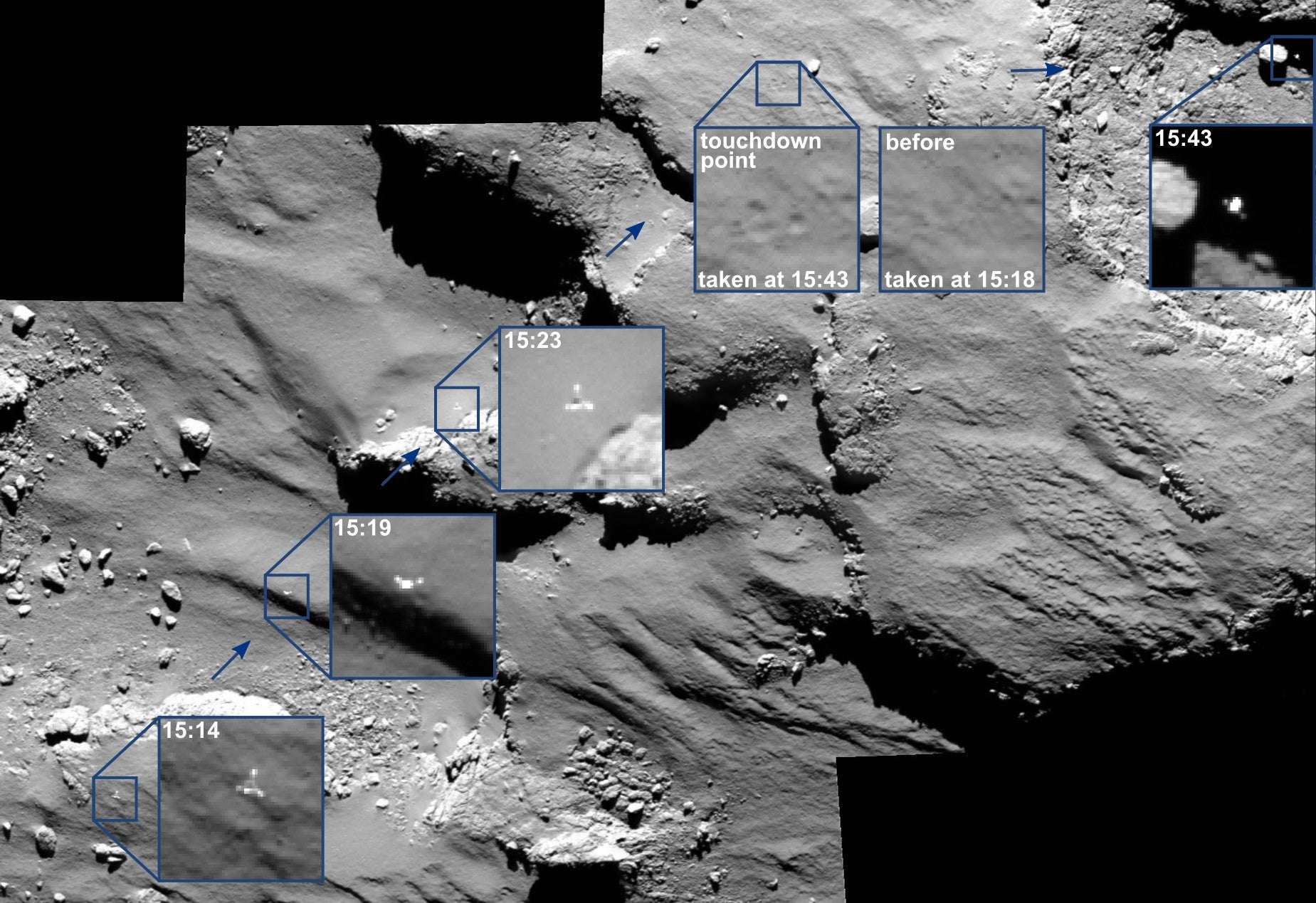Rosetta images show Philae lander's 'tallest, longest, slowest jump ever' across comet 67P
The lander bounced for more than two hours in total due to the comet's incredibly weak gravity

Your support helps us to tell the story
From reproductive rights to climate change to Big Tech, The Independent is on the ground when the story is developing. Whether it's investigating the financials of Elon Musk's pro-Trump PAC or producing our latest documentary, 'The A Word', which shines a light on the American women fighting for reproductive rights, we know how important it is to parse out the facts from the messaging.
At such a critical moment in US history, we need reporters on the ground. Your donation allows us to keep sending journalists to speak to both sides of the story.
The Independent is trusted by Americans across the entire political spectrum. And unlike many other quality news outlets, we choose not to lock Americans out of our reporting and analysis with paywalls. We believe quality journalism should be available to everyone, paid for by those who can afford it.
Your support makes all the difference.The European Space Agency (ESA) has released new images showing the amazing (and somewhat unexpected) journey taken by the Philae lander as it bounced across the surface of comet 67P.
Although the fridge-size robot’s exact location is still unknown, the new images show half hour of its journey as it descends to the comet and after its harpoons failed to secure it to the surface.
In the image above (click here to see a larger version) the three inset frames on the left show the descent with Philae travelling at around a metre a second. It then bounces off the surface and starts travelling east out of the image at about half that speed.
This initial bounce has been described as ‘the tallest, longest, slowest jump ever’ with Philae sailed for just under two hours and covering a distance of around a kilometre before hitting the surface and taking off again for a further seven minutes.
The ESA has reported that Philae is trapped in an unexpectedly shady area that has cut off its power earlier than expected, with the craft going into hibernation on 15 November 2014.
However, scientists say that the probe still managed to complete ’80 to 90 per cent’ of the scientific work that had been planned and there’s still a chance that it will reawaken in the coming weeks and months as the comet flies closer to the Sun – hopefully delivering more energy to Philae’s solar panels.
Join our commenting forum
Join thought-provoking conversations, follow other Independent readers and see their replies
Comments